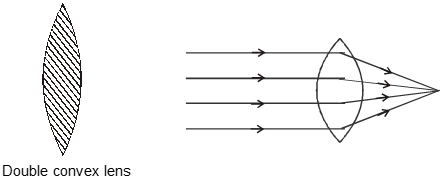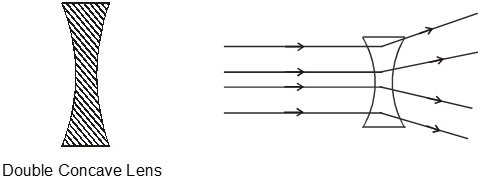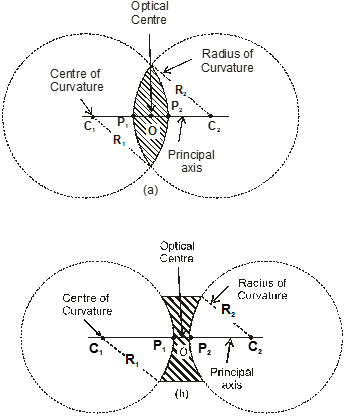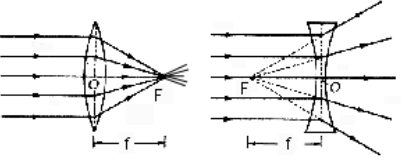- Books Name
- CBSE Class 7 Science Book
- Publication
- Param Publication
- Course
- CBSE Class 7
- Subject
- Science
Cause of Refraction :
Refraction occurs because the speed of light is different in different media. Light travels with a greater velocity in a rarer medium like air and with lower velocity in a denser medium like glass or water.
The lower the velocity of light in the medium than that in air, the greater the bending because the greater would be the need to take a shorter path.
Refraction through spherical lenses :
A lens is a piece of transparent refracting material bounded by two spherical surfaces or one spherical and other plane surface.In case of a lens, the light rays do not bounce off its surface, instead, the light rays pass through it but in doing so they change their path i.e., they bend from their original path.
A lens is the most important optical component used in microscopes, telescopes, cameras, projectors etc.
Basically lenses are of two types :
(i) Convex lens or converging lens
(ii) Concave lens or diverging lens
(a) Convex Lens :
A lens which is thick at the centre and thin at the edges is called a convex lens. The most common form of a convex lens has both the surfaces bulging out at the middle. When a convex lens is held close to an object, it always forms an enlarged, virtual and erect image. In a convex lens, when rays parallel to principal axis falls on lens after refraction they meet or appears to meet at a point. So due to this it is known is converging lens.

(b) Concave Lens :
A lens which is thin at the middle and thick at the edges is called a concave lens. The most common form of a concave lens has both the surfaces depressed inward at the middle. When a concave lens is held close to an object, it always forms a diminished, virtual and erect image.In a concave lens, when rays parallel to principal axis falls on lens after refraction they move away from the lens. So due to this it is known is diverging lens.

(c) Definitions in connection with Spherical Lens :
(i) Centre of curvature : The centre of curvature of the surface of a lens is the centre of the sphere of which it forms a part, because a lens has two surfaces, so it has two centres of curvature. In figure (a) and (b) points C1 and C2 are the centres of curvature.
(ii) Radius of curvature : The radius of curvature of the surface of a lens is the radius of the sphere of which the surface forms a part. R1 and R2 in the figure (a) and (b) represents radius of curvature.
(iii) Principal axis : It is the line passing through the two centres of curvature (C1 and C2) of the lens.

(iv) Optical centre : If a ray of light is incident on a lens such that after refraction through the lens the emergent ray is parallel to the incident ray, then the point at which the refracted ray intersects, the principal axis is called the optical centre of the lens. In the figure O is the optical centre of the lens.
If the radii of curvature of the two surfaces are equal, then the optical centre coincides with the geometric centre of the lens.

(v) Focus point and focal length : When rays parallel to principal axis falls on lens after refraction they meet or appears to meet at a point on principal axis, this point is known as principal focus. The distance between optical centre and focus point is known as focal length.


 Grow Career Publication
Grow Career Publication
 Param Publication
Param Publication
